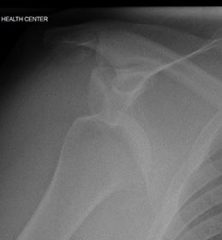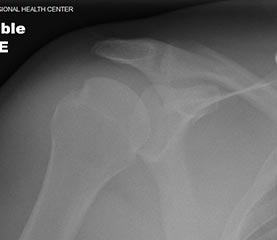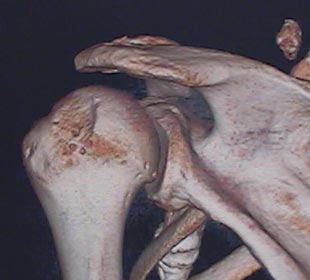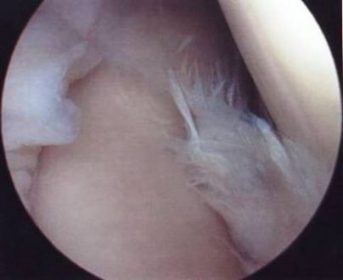Shoulder Instability
Shoulder instability can vary from person to person, depending on age and physical make-up, but it is important to get treatment for this condition. Untreated shoulder instability, with frequent shoulder dislocation, can lead to long-term shoulder arthritis. At Nebraska Hand & Shoulder, we understand the importance of providing the right treatment for shoulder instability based on your specific situation. Schedule an appointment today and experience the Nebraska Hand & Shoulder Institute difference.
Understanding Shoulder Instability
The diagnosis of shoulder instability is based upon taking a careful history and review of necessary diagnostics such as basic x-rays and a careful physical exam. Usually instability is related to trauma and there is a clear-cut history of a physical incident wherein the person’s shoulder is painfully knocked out of position requiring heavy sedation in the emergency room or an operating room to pull the shoulder back into place. Most people who think that they have dislocated their shoulder have only injured the acromioclavicular joint, the minor joint on the top of the shoulder. When we talk about shoulder instability we are talking about the main glenohumeral joint. There is really no ball-and-socket. The ball is stabilized by ligaments and the overlying muscles. A full rotator cuff muscle can act like a guidance system for the shoulder while the larger, bulky muscles are on the outside of the shoulder- most notably the deltoid, latissimus dorsi, teres major and pectoralis major and minor tendons- make the powerful motions of the shoulder occur.
In order for a person to comfortably move their shoulder, the rotator cuff muscle must stabilize the main glenohumeral joint and the rotator cuff muscles must act in harmony with the bulkier extrinsic muscles such as the deltoid, etc. to allow painless motion in the shoulder through a full range of motion.
Shoulder instability symptoms occur with activity of the shoulder unlike symptoms from advanced arthritis or rotator cuff tendinitis or impingement which may be painful even at rest.
X-ray Findings
X-rays at the time of presenting to the emergency room will show the main two bones of the shoulder not aligned properly. Occasionally with a very forceful initial dislocation almost exclusively in the front of the shoulder, i.e. anterior, much more commonly after numerous re-dislocations a person may have a defect in the backside of the ball of the shoulder known as a Hill-Sach’s lesion, an indentation or a piece of bone that has actually been knocked off.

Dislocated Shoulder

After Reduction
The Hill-Sach’s lesion tends to make the shoulder more unstable, i.e. more likely to dislocate, and it will make the person more apprehensive when the shoulder is in the abducted, externally rotated position. This correlates with the apprehension test during the physical exam bringing the person’s arm back up into the throwing position, the most likely position for dislocation.

Treatment
Treatment of shoulder dislocation depends on whether it is the first time or a subsequent re-dislocation and the age of the patient. Orthopaedists have tended to be relatively conservative over the years trying to allow a person to heal on his own (the majority of shoulder dislocations occur in boys and young men as opposed to women). A person under say 25 years of age most likely will develop a recurrent dislocation and go on to require surgery. A person dislocating for the first time at perhaps an age older than 25 in a non-military position does not have a high rate of re-dislocation; in fact, their activity level is typically less forceful and less likely to lead to a recurrent dislocation. There have been arguments over prolonged immobilization and it doesn’t seem to make a difference.
At this point in time I am more likely to offer a sling and analgesics for comfort and then after a few weeks the person resumes their activity avoiding the apprehension or throwing position. If the person re-dislocates, then we typically take them to surgery for a reconstructive procedure of which there are a variety. It is up to the surgeon whether he offers an open or arthroscopic approach. The arthroscopic approach is less reliable and there is a considerably greater rate of failure, i.e. continued dislocation, and it is much more costly. Of course, this is an area of great dissent among orthopaedists. One way or another, we need to re-establish the ligaments in the glenoid labrum which acts as a retaining wall in the front of the shoulder to prevent re-dislocation. This requires about a minimum of three but more likely six months of healing after surgery.
Labral Tear Diagnosis
There is a great controversy over the diagnosis of a torn glenoid labrum. It is a very rare injury. There are some that degenerate. A tear degeneratively in older folks when they are usually asymptomatic will show up on an MRI scan but most MRI scan interpretations suggesting that there is a torn labrum are actually wrong and if the person goes to surgery the surgeon will find that, in fact, the labrum is intact and most likely that finding has nothing to do with the patient’s symptoms. Labral tears have been categorized for practical purposes as degenerative or traumatic, repairable and non-repairable, but for the most part people over the age of 40 are not candidates for a repair, just trimming of a torn labrum unless it has occurred in association with dislocation.
The first and foremost treatment for a torn glenoid labrum, most of which occur on a degenerative basis, is to just trim away the torn portion if it is causing symptoms. Those that are torn off of the glenoid rim are a minority, i.e. very infrequent, and need to be reattached to the glenoid because otherwise there is instability in addition to pain.




